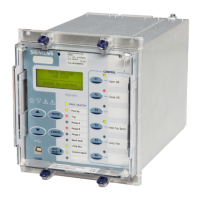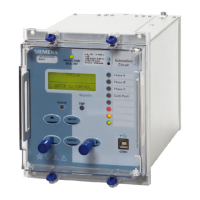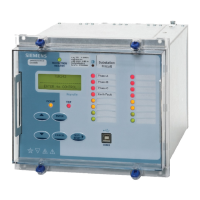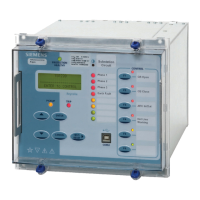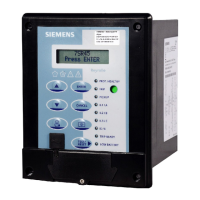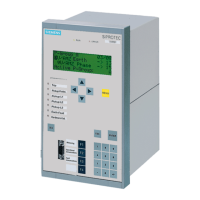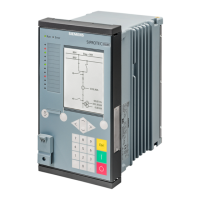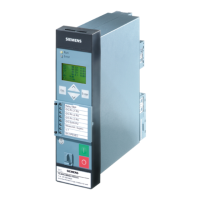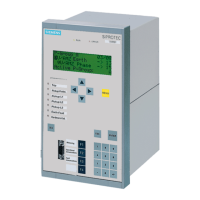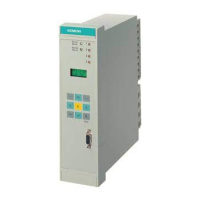7SR11 & 7SR12 Description Of Operation
©2012 Siemens Protection Devices Limited Chapter 1 Page 72 of 76
auxiliary supply voltage. The data storage menu contains the settings for the Demand, Waveform and Fault
storage features.
6.3.2 Demand
Maximum, minimum and mean values of line currents, voltages and power (where applicable) are available as
instruments which can be read in the relay INSTRUMENTS MENU or via Reydisp.
The Gn Demand Window setting defines the maximum period of time over which the demand values are valid. A
new set of demand values is established after expiry of the set time.
The Gn Demand Window Type can be set to FIXED or PEAK or ROLLING.
When set to FIXED the maximum, minimum and mean values demand statistics are calculated over
fixed Window duration. At the end of each window the internal statistics
are reset and a new window is started.
When set to PEAK the maximum and minimum values since the feature was reset are recorded.
When set to ROLLING the maximum, minimum and mean values demand statistics are calculated over
a moving Window duration. The internal statistics
are updated when the window advances every Updated Period.
The statistics can be reset from a binary input or communication command, after a reset the update period and
window are immediately restarted.
6.3.3 Event Records
The event recorder feature allows the time tagging of any change of state (Event) in the relay. As an event
occurs, the actual event condition is logged as a record along with a time and date stamp to a resolution of 1
millisecond. There is capacity for a maximum of 1000 event records that can be stored in the relay and when the
event buffer is full any new record will over-write the oldest. Stored events can be erased using the DATA
STORAGE>Clear Events setting or from Reydisp.
The following events are logged:
Change of state of Binary outputs.
Change of state of Binary inputs.
Change of Settings and Settings Group.
Change of state of any of the control functions of the relay.
Protection element operation.
All events can be uploaded over the data communications channel(s) and can be displayed in the ‘Reydisp’
package in chronological order, allowing the sequence of events to be viewed. Events can be selected to be
made available spontaneously to an IEC 60870-5-103, Modbus RTU or DNP 3.0 compliant control system. The
function number and event number can also be changed. The events are selected and edited using the Reydisp
software tool.
For a complete listing of events available in each model, refer to Technical Manual Section 4 ‘Data
Communication’.
6.3.4 Waveform Records.
Relay waveform storage can be triggered either by user selected relay operations, from the relay fascia, from a
suitably programmed binary input or via the data comms channel(s). The stored analogue and digital waveforms
illustrate the system and relay conditions at the time of trigger. An output is provided to indicate when a new
record has been stored.
A waveform can also be stored from the fascia using the DATA STORAGE/Waveform Storgae>Trigger
Waveform setting
In total the relay provides up to 10 seconds of waveform storage, this is user selectable to 1 x 10second, 2 x 5
second, 5 x 2 second or 10 x 1 second records. When the waveform recorder buffer is full any new waveform
record will over-write the oldest. The most recent record is Waveform 1.
As well as defining the stored waveform record duration the user can select the percentage of the waveform
storage prior to triggering.
Waveforms are sampled at a rate of 1600Hz.
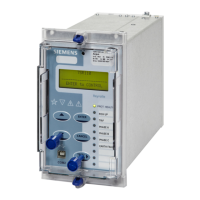
